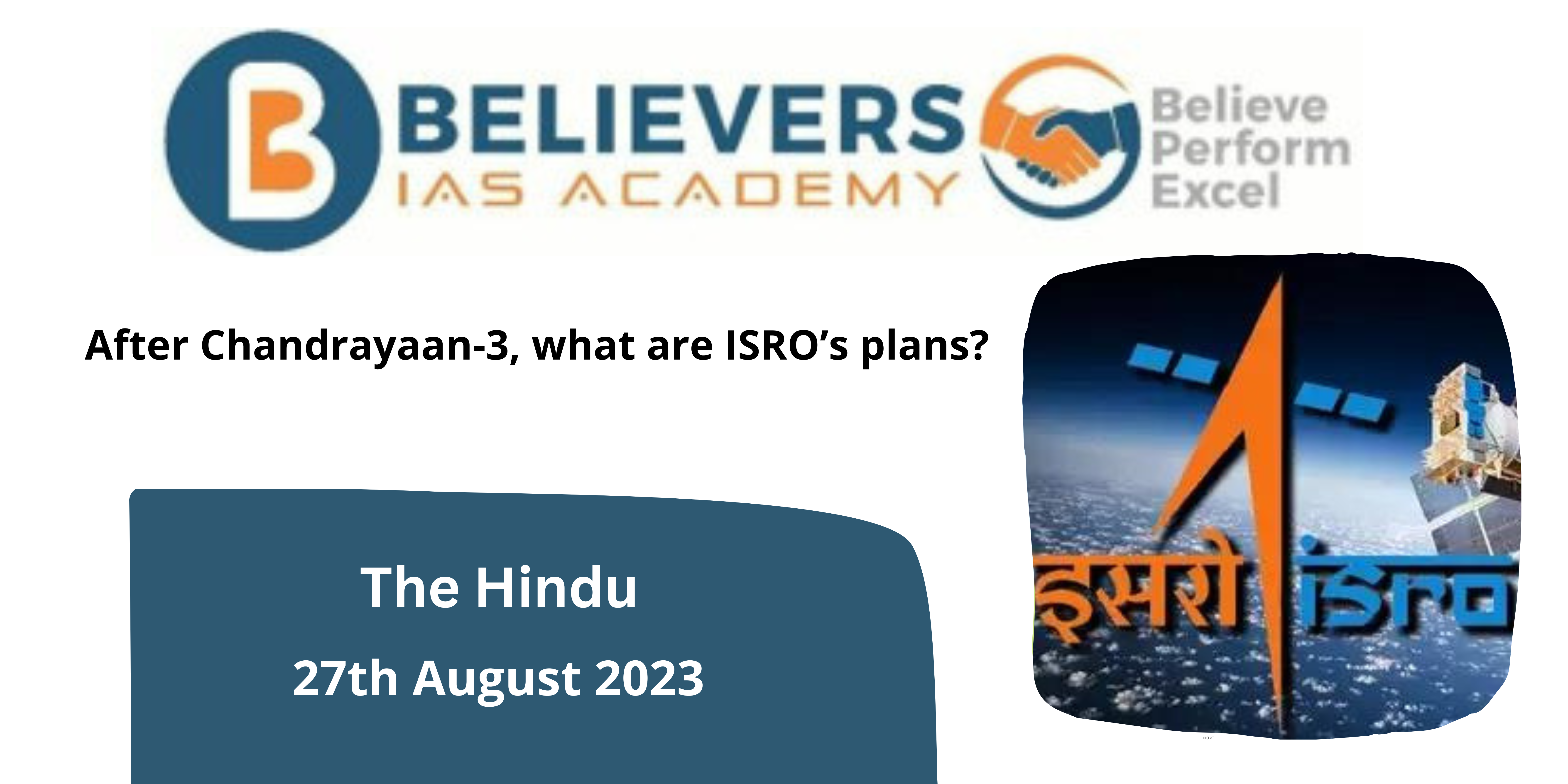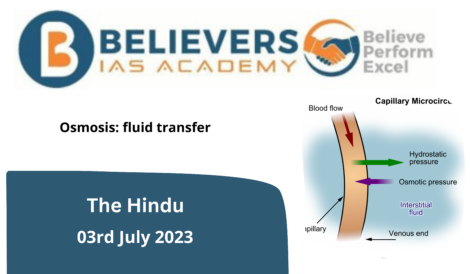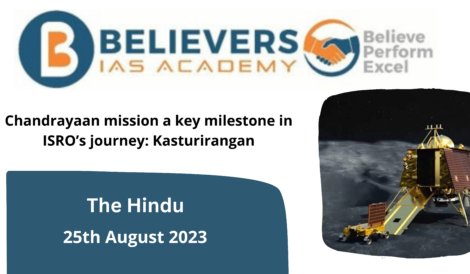After Chandrayaan-3, what are ISRO’s plans?
Context
On August 23, at 6:03 IST, the Chandrayaan-3 lander made contact with the lunar surface in the south polar area. The spacecraft navigated itself from an altitude of around 30 km and a speed of 1.7 km/s down to the ground during a 19-minute sequence that began with the landing. India became the first country to successfully soft-land a robotic instrument in the moon’s south pole zone, and it was the fourth country overall. The Indian Space Research Organisation (ISRO), which created, launched, and is currently in charge of managing the Chandrayaan-3 equipment, benefits from this elite status by being more respected by other nations.
Exploration of the Moon with Chandrayaan-3:
On August 23 at 6:03 p.m. IST, Chandrayaan-3 made a successful landing in the south polar zone of the moon.
A 19-minute sequence including the engines, thrusters, and navigation sensors led to the landing.
India completed the fourth soft moon landing and the first one in the south polar zone of the moon.
Together with JAXA, ISRO is a member of the Lunar Polar Exploration (LUPEX) program.
LUPEX, also known as “Chandrayaan 4”, will use a more sophisticated lander and rover technology.
Using a drill, LUPEX plans to conduct in-depth research on the south-polar area of the moon.
Additionally, the mission intends to show “night survival” in the challenging lunar environment for the course of the 14-day night.
Areas of Focus for ISRO
Research, development of satellite systems, manufacturing of rockets, satellite operation, and orbital debris mitigation are only a few of the operations carried out by ISRO.
The “Gaganyaan” human spaceflight mission, the development of the SCE-200 rocket engine, the Reusable Launch Vehicle Technology Demonstrator (RLV-TD), and the Small Satellite Launch Vehicle (SSLV) are all topics of focus.
Future Major Missions
- The Aditya L1 spacecraft will launch in September to conduct in-depth research on the sun.
- Space X-ray research will be conducted via the XPoSat spacecraft, and a third test flight for SSLV is also anticipated.
- A cooperative NASA and NISAR project, NISAR will launch in January 2024 to examine the surface of the Earth using radar.
- It is intended to launch a human-rated LVM-3 rocket without a crew on the Gaganyaan G1 and G2 missions.
- The launch of the GSAT-20 communications satellite is planned for 2024.
Technological Advancements:
- Technological developments include the development of the RLV-TD, a reusable launch vehicle that is similar to the NASA Space Shuttle.
- Due to the RLV-TD’s architecture, it is possible to send 20,000 kg of weight to low-Earth orbit.
- Effective rocket fuels like methalox (methane and liquid oxygen) are being studied by ISRO.
- To increase the lifespan of satellites, electric propulsion methods are currently being developed.
Commercial launches and technology transfer:
- Particularly in the areas of electronics and telecommunications, ISRO is transferring technology to the private sector.
- After developmental flights, efforts are being made for the transfer of technology to SSLV.
- Launching payloads for other space agencies and organizations is referred to as a commercial launch.
Lunar and Planetary Missions in the Future:
- Chandrayaan 4 and LUPEX are two of the lunar exploration missions planned by ISRO.
- A sophisticated lander and rover system is used in the LUPEX collaboration with JAXA.
- ISRO plans to send missions to Venus and Mars to explore Venus, such as “Shukrayaan.”




